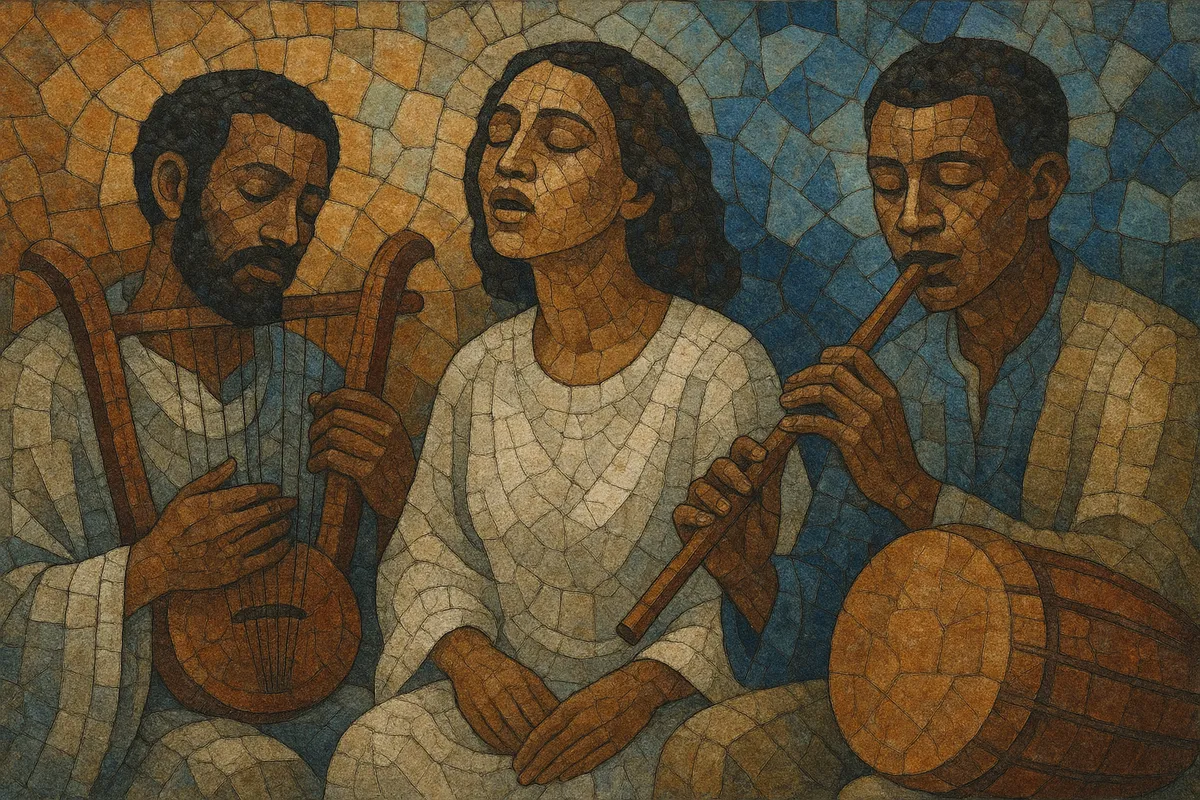Tizita (Amharic for “memory” or “nostalgia”) is an Ethiopian song type and modal framework (qenet) famed for expressing longing, reminiscence, and bittersweet reflection—often called the “Ethiopian blues.”
Musically, tizita revolves around pentatonic pitch collections in two common variants—often approximated as a “minor” (1–b3–4–5–b7) and a “major” (1–2–3–5–6) flavor—performed with flexible intonation and expressive, melismatic vocals. Traditional performances feature azmari singers accompanied by the krar (lyre), masenqo (one‑string fiddle), washint (flute), and kebero (drum), with tempos that are slow or rubato and a prominent drone on the tonic.
In the 1960s–70s, tizita’s melodic language became a cornerstone of Ethio‑jazz and the broader Addis Ababa “golden age” sound, where horn sections and modern rhythm sections reimagined its modal melancholy for urban stages and recordings.
Tizita belongs to Ethiopia’s indigenous modal system (qenet), alongside bati, ambassel, and anchihoye. Its roots are associated with the Amhara highlands and the azmari tradition—poet‑singers who performed in tej bèt (honey‑wine houses) and social gatherings. The term “tizita” literally signals remembrance and yearning, which shaped both the lyrical themes and the affective performance style. While the practice likely predates recording technology, its modern identity coalesced in the 19th and early 20th centuries through oral transmission.
By the mid‑20th century, tizita songs were widely known in urban centers. In the 1960s–70s, as Addis Ababa’s nightclub scene flourished, record labels (e.g., Amha Records) brought tizita into the studio. Singers such as Tilahun Gessesse, Mahmoud Ahmed, Bizunesh Bekele, and Muluken Melesse recorded iconic tizita pieces, while instrumentalists like Mulatu Astatke translated the mode’s contours into Ethio‑jazz—retaining pentatonic DNA while adding horns, vibraphone, and jazz harmony.
After 1974, periods of political upheaval constrained nightlife and the recording industry, yet tizita persisted in homes, churches’ broader musical culture, and diasporic communities. The Éthiopiques reissue series (from the late 1990s) revived international interest in Ethiopia’s classic recordings, foregrounding tizita’s emblematic role in the national sound.
Today, tizita remains a living idiom: azmari performance thrives, pop and Ethio‑jazz artists continue to write new tizita songs, and the mode’s melancholic color regularly appears in film scores, world‑fusion projects, and diaspora productions.
Choose one of the two common tizita pentatonic flavors:
•Tizita “minor” (approx.): 1–b3–4–5–b7.
•Tizita “major” (approx.): 1–2–3–5–6.
•Intonation is flexible; aim for expressive bends, glissandi, and microtonal nuance rather than strict equal temperament.
•Maintain a drone (tonic) on krar, masenqo, or bass to ground the mode.


